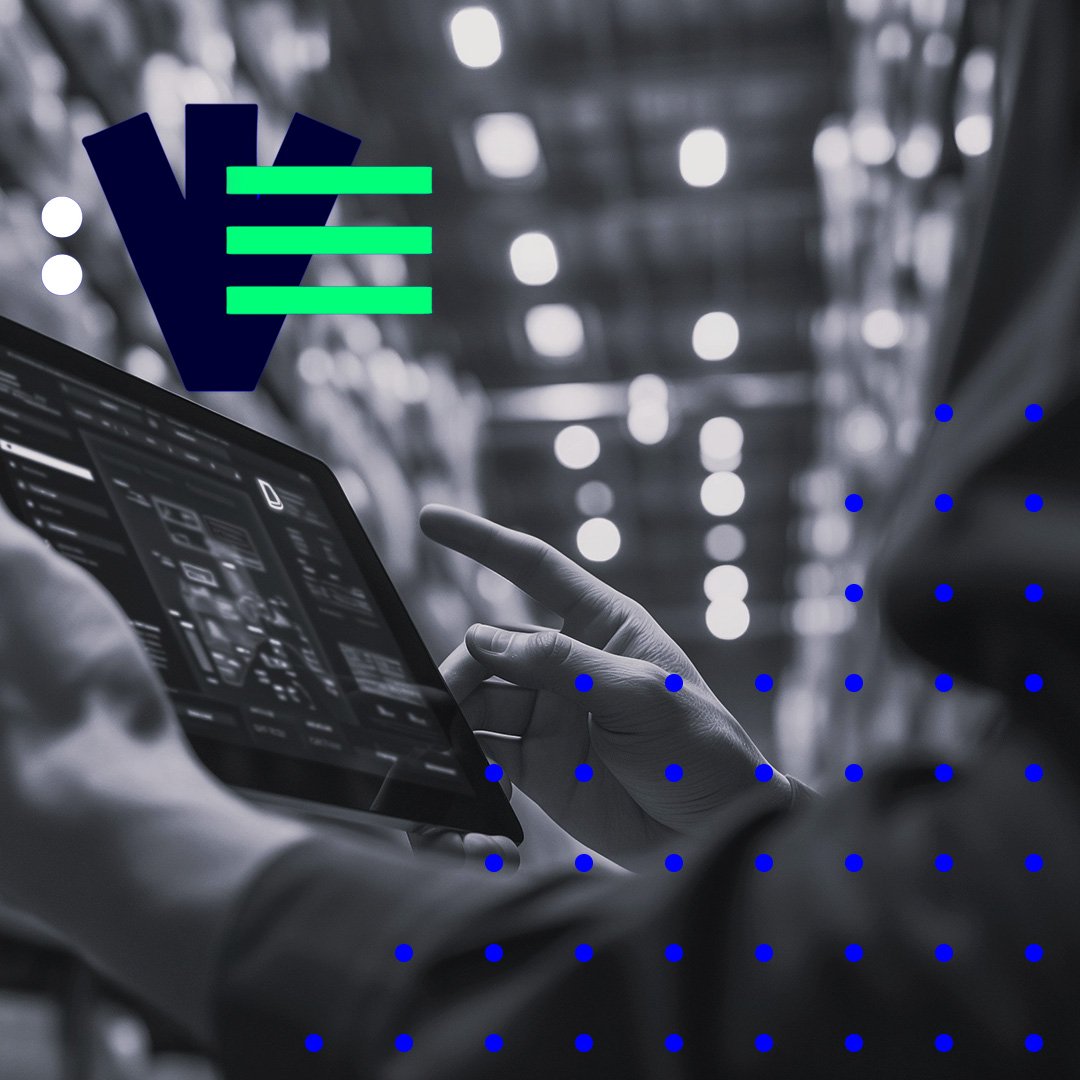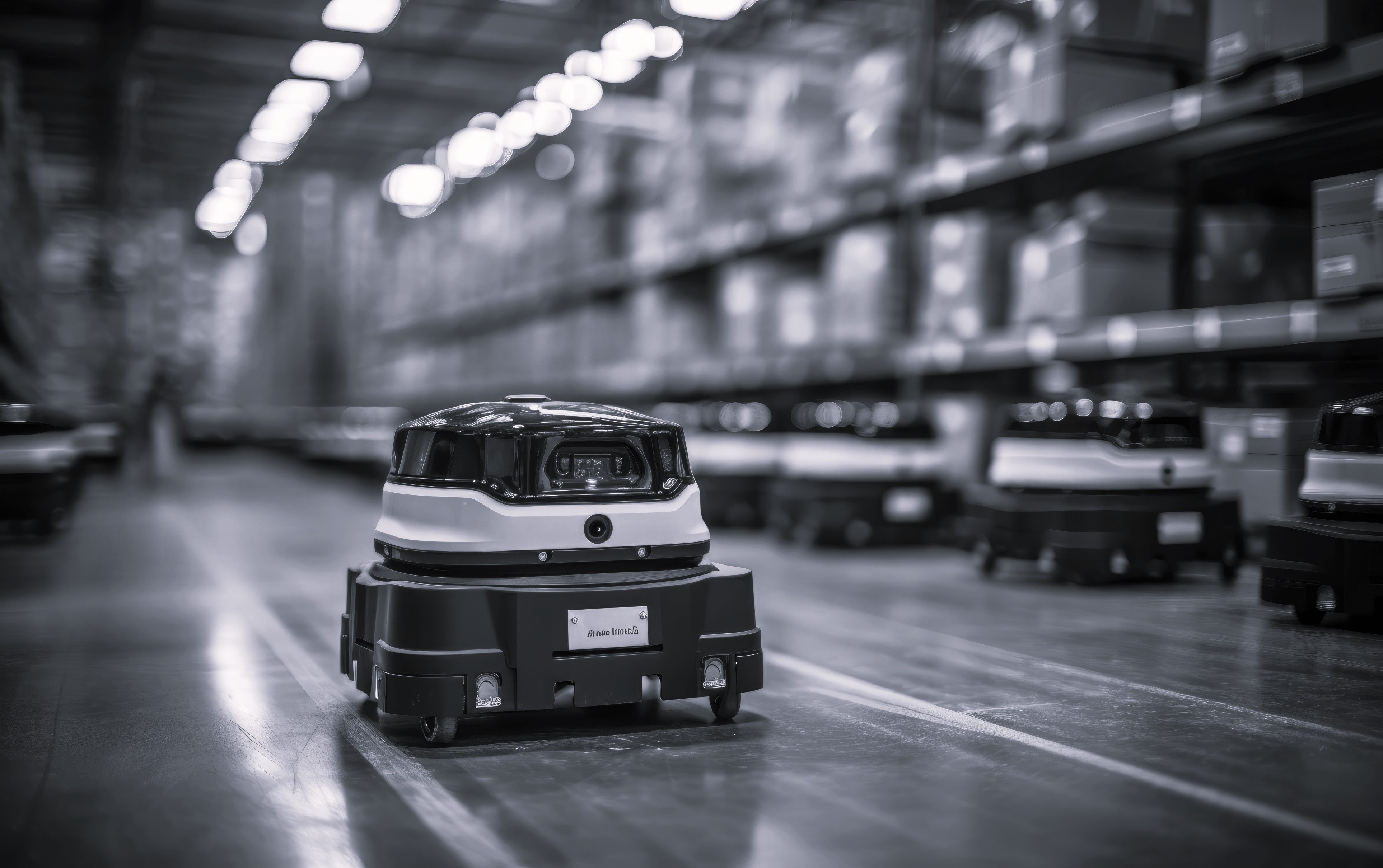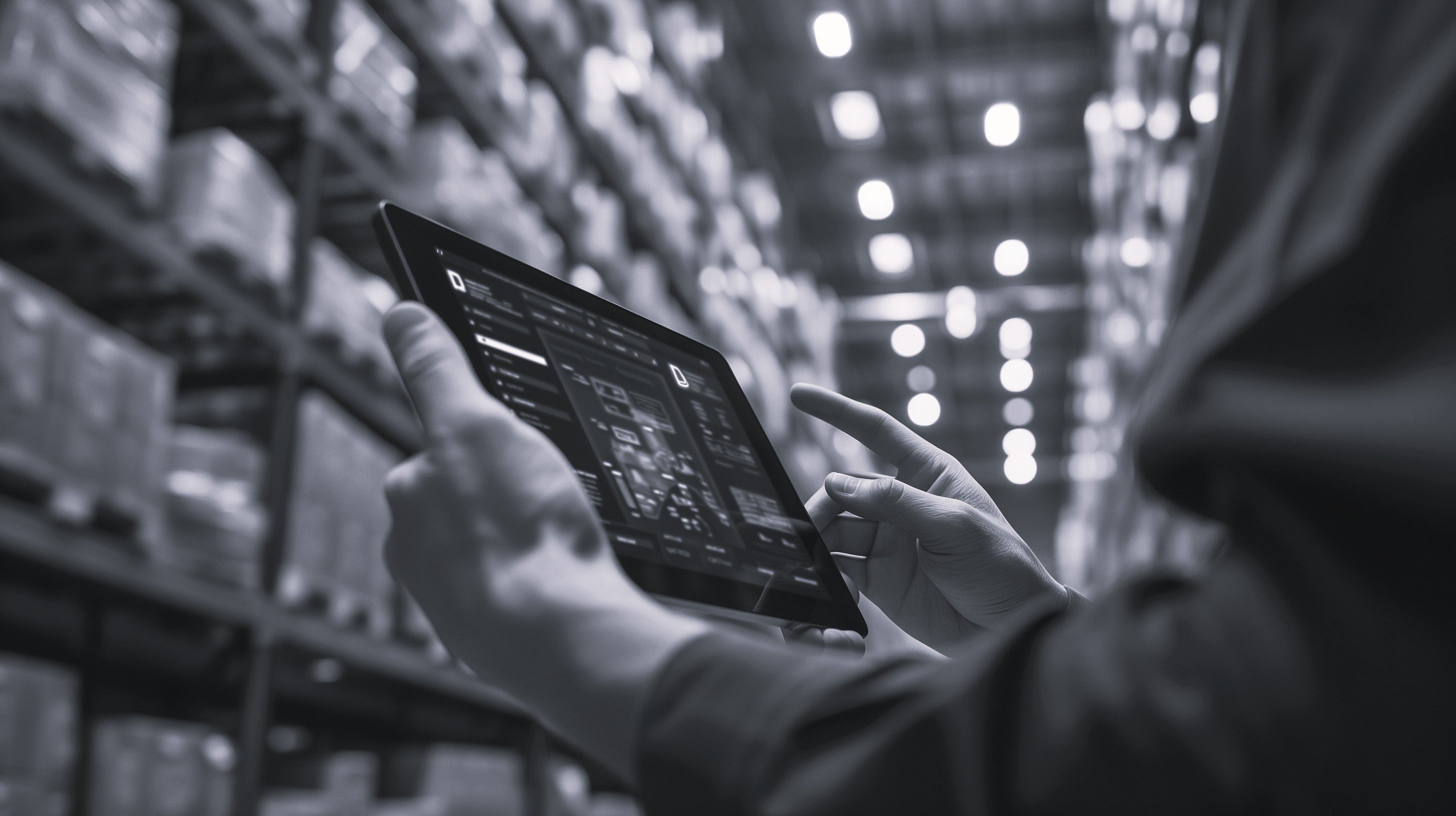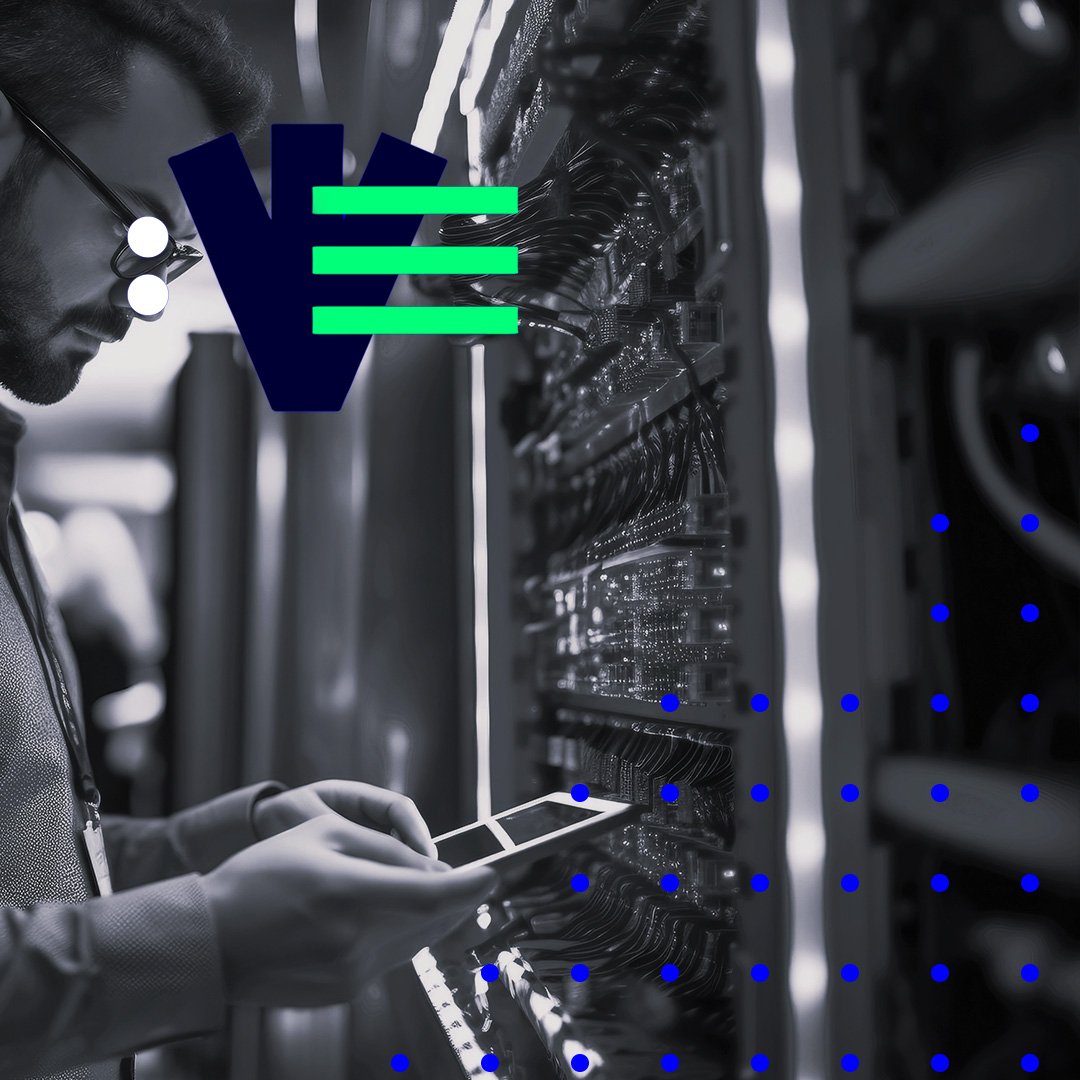The future is smart: IoT, AI, and Big Data - Smart City & Smart Campus
How public administrations and educational institutions can benefit from these technologies The transformative role of IoT, AI, and Big Data in the...
8 min read
 Géraldine Wymann
:
Jun 7, 2024 1:04:36 PM
Géraldine Wymann
:
Jun 7, 2024 1:04:36 PM

The Future of Logistics & Transportation with Top Trends: IoT Devices, Artificial Intelligence, and Automation. In the rapidly evolving industry, these technologies are pivotal in enhancing efficiency, optimizing costs, and elevating customer satisfaction. Explore how companies like DHL are already leveraging these innovations to automate warehouse operations, optimize transportation, and introduce innovative delivery methods. Dive into this blog to understand how these trends can enhance your profitability and competitiveness, and what considerations you should keep in mind regarding your IT infrastructure.

As IoT technology advances, automated vehicles and self-driving cars are becoming increasingly prevalent. They reduce dependence on human drivers, enhance safety, and improve efficiency in transportation.
IoT enables comprehensive fleet management through the utilization of telematics systems. These systems capture and analyze data on vehicle performance and driver behavior to enhance operations, optimize fuel efficiency, and streamline maintenance planning. This results in cost savings and more sustainable fleet management.
IoT technologies offer detailed tracking and monitoring of goods movements along the supply chain. Sensors and real-time data enable precise location tracking, efficient route planning, and identification of bottlenecks and issues in real-time. This leads to improved inventory management, higher customer satisfaction, and reduced delivery times.
According to 2022 statistics, 30% to 50% of food is lost on its way to store shelves. Nevertheless, logistics companies can effectively manage transportation, minimize waste, and reduce lost items through the adoption of technology trends in supply chain management. This includes the use of sensors, tags, and trackers for real-time tracking of goods, as well as leveraging the Internet of Things (IoT) to detect potential issues, optimize inventory levels, and improve coordination of supply chain processes. According to a 2023 supply chain report, 68% of industry leaders are also willing to adopt IoT technology. Companies like Schneider Electric, Volvo, and Nissan are already implementing technology trends in the supply chain to monitor energy consumption, enhance fleet operations, and make the flow of goods more efficient.
IoT technologies enable effective monitoring of traffic safety, theft prevention, and security of goods and vehicles. GPS tracking, cameras, and sensors help minimize risks, detect security breaches, and ensure the protection of assets along the supply chain.
The vast amount of data generated by IoT technologies opens up new opportunities for advanced data analysis and insights. By deploying artificial intelligence and machine learning, patterns, trends, and predictions can be identified to improve operations, minimize risks, and make informed business decisions.
"At Basler Verkehrsbetriebe, we are already using the first IoT applications in our streetcar fleet. These technologies enable us to transmit and monitor various faults within the vehicles and on the rails, particularly in the area of switch control and heating. In the future, we see considerable potential in the area of predictive maintenance, for example by analyzing the condition of wheels and rails. Real-time data can also be used to optimize e-bus timetables, which not only increases operational efficiency but also benefits the environment.
Investigations into further IoT use cases are also currently underway in various areas. However, cost-effectiveness is also important here. As we are largely financed by public funds, all projects must have an appropriate cost-benefit ratio. With the increased use of IoT, the requirements for data management and security are also increasing. Our IT team is working hard to master these challenges and prepare for the future."
Martin Peraic, Head of IT at Basler Verkehrs-Betriebe
"Overall, IT networks are crucial for transportation and logistics as they enable efficient, transparent, and cost-effective management of supply chains and seamless integration of IoT devices & 5G. Companies investing in modern and robust IT infrastructures can enhance their competitiveness, improve customer satisfaction, and simultaneously achieve operational efficiency gains."
Beat Sommerhalder, Country Manager Switzerland at HPE Aruba Networking
Artificial Intelligence enables the analysis of large datasets and the generation of accurate predictions for optimal routes and storage strategies. AI allows computers to analyze problems, create forecasts, provide solution recommendations, and even make decisions. Exemplary application areas of AI in logistics include:
// Error analysis and anomaly detection to identify and rectify issues promptly.
// Inventory inspection and replenishment planning to efficiently manage stock and avoid supply shortages.
// Warehouse management to optimize item placement and expedite processes within the warehouse.
// Cargo consolidation, container management, and mode of transportation selection to increase truck load rates and enhance transport efficiency.
// Scheduling and routing based on AI-driven forecasting to optimize route planning and identify issues early on.
// Capacity and personnel requirement planning to cope with demand peaks.
// Occupational safety, such as stress and fatigue detection in truck drivers.
// Self-learning supply chain to continuously optimize the supply chain.
// Customer communication, for example, through the use of chatbots to enhance customer service.
For instance, DHL reportedly utilizes AI in many of the mentioned areas to boost efficiency, reduce CO2 emissions, and enhance customer satisfaction. AI enables DHL to monitor shipment movements, optimize routes, improve cargo optimization, enhance workplace safety, and optimize customer service.
"Artificial intelligence (AI) is a hotly debated topic and we are keeping a close eye on developments in this area. Currently, the use of AI at BVB is mainly limited to supporting our programmers with tools such as Chat-GPT. In addition, we are planning initial proof of concepts (PoCs) with Microsoft Copilot and similar assistive services to further explore the potential of these technologies.
We are aware of the importance and opportunities of AI, but are proceeding with caution to ensure that each implementation offers clear added value and fits in with our strategic goals."
Martin Peraic, Head of IT at Basler Verkehrs-Betriebe
According to the MHI Annual Industry Report (2023), automation and robotics are leading the way and providing a competitive advantage through process automation. Nearly 80% of surveyed companies plan to invest in these technologies for their operational processes.
Through automated picking and sorting systems, robot-controlled palletizers, and driverless transport systems, companies can optimize warehouse processes and reduce human errors. This allows employees to focus on strategic tasks and minimize risks in hazardous environments.
The logistics and delivery industry is increasingly integrating robotics and automation technologies such as drones. Modern robotic systems in sorting facilities enable fast and precise processing of packages. Driverless vehicles and drones are used to transport goods efficiently and environmentally friendly, even in previously inaccessible areas. These technologies enhance delivery speed and open up new possibilities for delivery during crises.
By deploying robots and automation technologies, logistics companies can increase their efficiency and offer their customers faster and more cost-effective delivery options. Automated processes improve reliability and reduce errors, leading to higher customer satisfaction.
While robotics and automation offer many benefits for the logistics industry, there are also challenges. Initial investment costs and the potential impact on jobs are factors that need to be considered. Companies must find the balance between automation and human labor to ensure an optimal ratio.
"Create a modern and personalized connection for everyone - employees, customers, and partners. The importance of IT networks for transportation and logistics is significant and continues to grow as these industries become increasingly globalized, interconnected, and technologically advanced."
Beat Sommerhalder, Country Manager Switzerland at HPE Aruba Networking

The integration of wireless technologies in the transportation and logistics industry presents exciting prospects for enhancing efficiency, optimizing processes, and ensuring safety. Through the adoption of IoT devices, artificial intelligence, and automation, companies can analyze vital data in real-time, make well-informed decisions, and streamline their operations. Thorough planning, robust wireless infrastructure, and continuous adaptation to emerging technologies are essential for staying competitive and shaping the industry's future.
However, this integration also brings about complex challenges. Aligning existing processes with new technological solutions requires expertise and coordination. Data privacy and security remain paramount concerns, particularly with the increased connectivity of wireless devices in logistics operations. Additionally, adequately training employees to handle advanced systems like Wi-Fi 6 is crucial. Thus, it is imperative to identify these obstacles early and implement suitable measures for a smooth transition.
"Our expertise and extensive experience enable us to assist you in planning and evaluating Wi-Fi solutions and guiding you through the integration of IoT devices. Our consulting services offer tailored strategies, while our hardware solutions and cybersecurity tools ensure comprehensive protection of your sensitive data. Our objective is to support you through a seamless transition to modern and secure systems while optimizing your processes. Through our Managed Network & Security or Managed Hybrid-Infrastructure offerings, we share responsibility for planning, implementing, and operating your infrastructure. By partnering with us, you gain access to a seasoned team of IT professionals dedicated to securing your IT operations. We mitigate security risks through proactive monitoring, software updates, and threat detection. With our managed services, you can rest assured that your wireless infrastructure operates reliably and securely, allowing you to focus on your core business," summarizes Laurent Bourqui, Sales Director Suisse Romande and member of the Executive Board of BNC.
Technologies such as Wi-Fi 6E or Wi-Fi 7 offer various opportunities for further development and optimization in the transportation and logistics industry:
The introduction of Wi-Fi 6E or Wi-Fi 7 enables even faster data transfer rates and improved network stability for better communication between devices and systems.
Wi-Fi 7 offers low latency times, enabling real-time monitoring and control of logistics processes and making operations more efficient.
Wi-Fi 6E or Wi-Fi 7 support a growing number of IoT devices, enabling smooth integration of new technologies.
With Wi-Fi 6E or Wi-Fi 7, new application possibilities emerge, such as the use of virtual reality or the implementation of autonomous vehicles in warehouses.
The specific requirements and challenges may vary depending on the company. Some possible aspects could include reliable connectivity in rural or remote areas, high bandwidth for data-intensive applications, or low latency for real-time communication.
5G generally delivers faster data transmission speeds compared to Wi-Fi. 5G can achieve speeds of up to several gigabits per second, whereas Wi-Fi typically offers more limited speeds.
5G boasts higher capacity and can therefore accommodate a larger number of simultaneous connections than Wi-Fi. This is especially advantageous in environments with numerous connected devices.
Wi-Fi often boasts a greater range than 5G. Wi-Fi signals can typically reach farther distances than 5G signals, implying that Wi-Fi may offer better coverage in certain scenarios.
5G typically offers lower latency than Wi-Fi. This translates to faster response times when utilizing 5G compared to Wi-Fi.
5G provides faster and more reliable connectivity, which can be highly advantageous for real-time tracking, coordination, and control of transportation and logistics processes. Additionally, 5G has the potential to enhance efficiency and productivity by enabling rapid data transmission.
However, implementing 5G necessitates a substantial investment in infrastructure and new technologies. Furthermore, the coverage of 5G signals may not be comprehensive yet, leading to limitations in availability.
Wi-Fi offers a balanced combination of speed, range, and latency, making it suitable for general operations in the transportation and logistics industry. It is generally more cost-effective to implement. However, Wi-Fi may face capacity limitations in environments with numerous connected devices, resulting in latency issues. Furthermore, the range of Wi-Fi can be restricted, particularly in large warehouses or outdoor environments.
https://acropolium.com/blog/top-logistics-technology-trends/
https://www.wi-fi.org/discover-wi-fi/wi-fi-6
https://www.qualcomm.com/5g/what-is-5g
https://www2.deloitte.com/xe/en/insights/industry/technology/technology-media-and-telecom-predictions/2022/wifi6-vs-5g-essential-partners-in-the-next-generation.html
https://www.digitaltrends.com/mobile/5g-vs-wi-fi/
Https://iot.telenor.com/industries/transportation-logistics/iot-trends/
https://dhl-freight-connections.com/de/trends/chatgpt-co-kuenstliche-intelligenz-in-der-logistik/

How public administrations and educational institutions can benefit from these technologies The transformative role of IoT, AI, and Big Data in the...

The future of connectivity An analysis of the significance of 5G, Wi-Fi 6E, Wi-Fi 7, IoT, and AI for IT service providers in Switzerland

What awaits the Head of IT in Banks and Insurance Companies in the year 2024? IoT, Telematics, Usage-Based Insurance, Open Banking, and Big Data...